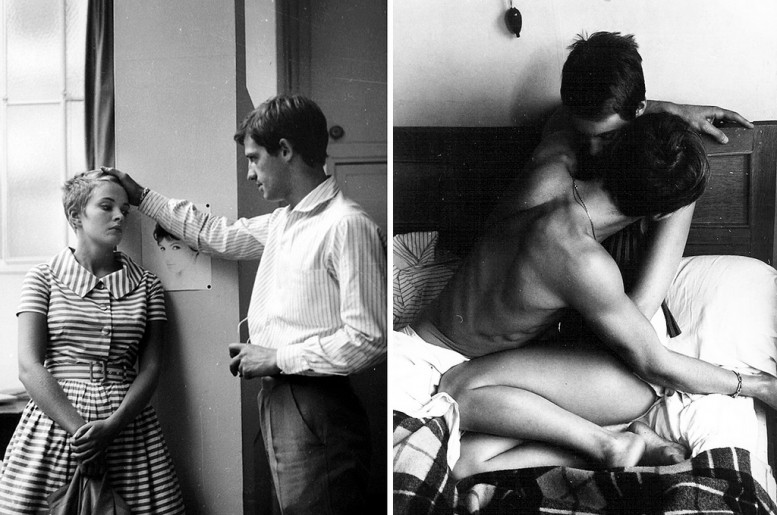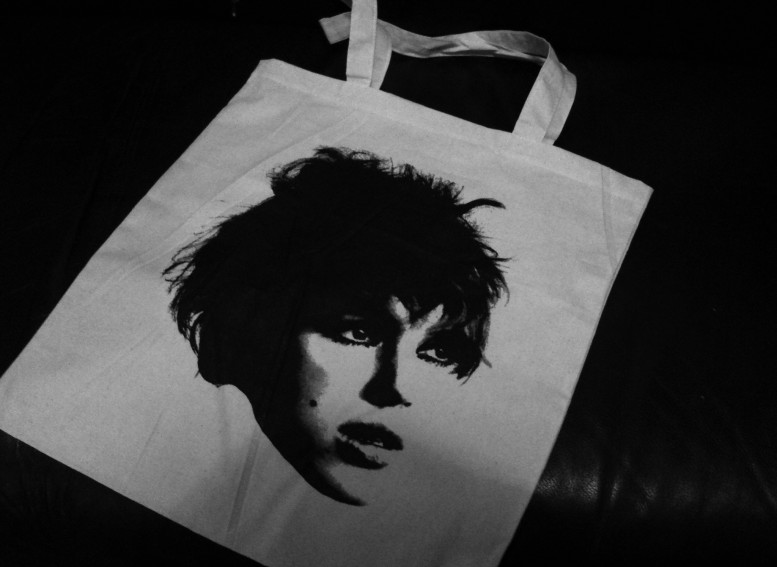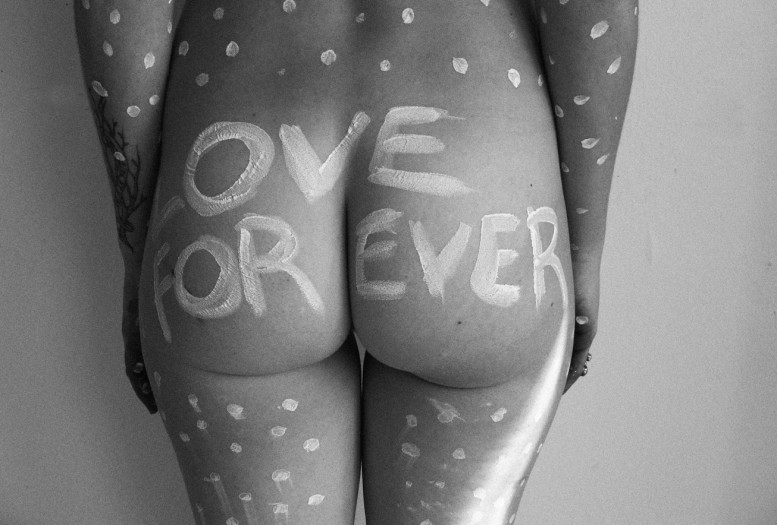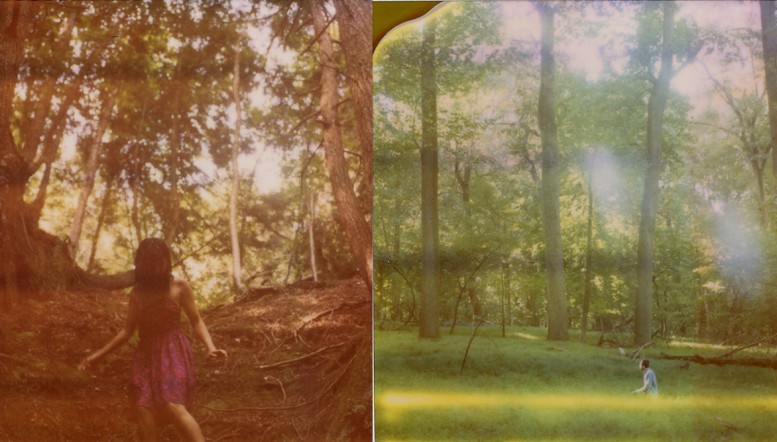“Photos de Cinéma: Images of the French New Wave by Raymond Cauchetier,” which includes production photographs from “Breathless,” is the first exhibition outside of Europe to showcase Cauchetier’s motion picture work. On view will be 125 newly made, black-and-white prints from Cauchetier’s own 35mm negatives. The printing was personally overseen by Cauchetier, now in his 90s, at his preferred lab in Paris. Other films represented in the exhibition include “Adieu Philippine,” “Baisers volés” (“Stolen Kisses”), “Jules et Jim,” “Lola” and “La peau douce” (“The Soft Skin”). “Photos de Cinéma” is open to the public through June 24 in the Academy of Motion Picture's Grand Lobby Gallery in Beverly Hills.
Sunny Days & Sweetness
Dorothy Iannone's exhibition entitled Sunny Days & Sweetness is on view at Peres Projects unti April 17.
Surface To Air X Kim Gordon
Kim Gordon creates an amazing poem t-shirt for Surface to Air.
Walking Piece
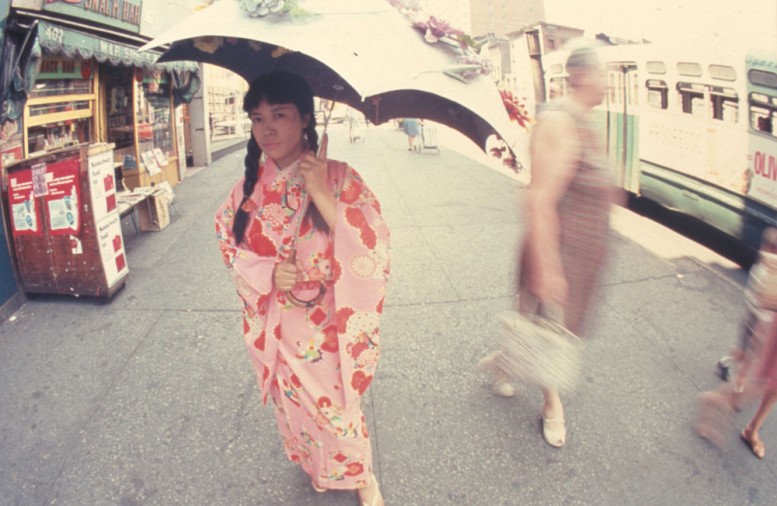 Walking Piece, 1966 / Image courtesy: Ota Fine Arts, Tokyo / © Yayoi Kusama, Yayoi Kusama Studio inc.
Walking Piece, 1966 / Image courtesy: Ota Fine Arts, Tokyo / © Yayoi Kusama, Yayoi Kusama Studio inc.
Yayoi Kusama in one of her performance art pieces entitled Walking Piece. Stay tuned for an interview and more photos of Yayoi Kusama in the upcoming issue of AUTRE - out this week. Be sure to sign up for the newsletter to find a copy!
Fresh From the Press: Edie Tote Bags
Parra
With its vibrant color, curvaceous lines, and eccentric, distinctive imagery, the bold and playful work of Dutch graphic artist Parra has garnered a substantial cult following since it first appeared in the 1990s. Parra's cartoonlike, hybridized characters and free-form typography have become iconic, while his hand-drawn approach to graphic design has landed him high-profile collaborations with companies like Nike and InCase. For this exhibition, his first in a U.S. museum, Parra is taking over SFMOMA's second-floor landing with an expansive mural that showcases his irrepressible post-Pop design style. On view until July 29, 2012.
Love
Iconic
Directed by Skinny (Marc-Edouard Leon & David Hache) for German based DJ Moonbootica for the single Iconic. Stay tuned for the next issue of AUTRE out this week with an interview with Marc-Edouard Leon of Skinny.
Jena Malone for AUTRE
The inspiring and beautiful Jena Malone at home in Los Angeles, CA, from the upcoming Autre Issue 002 : The Future is Now. photograph by Adarsha Benjamin
Obscure Desires
Thomas Ruff's Nudes
In 2003 Ruff produced the first nudes, culling images from internet pornography, then digitally processing them—enlarging them as far as possible—so as to cloud the crude clarity of the original images. For a new exhibition, currently on view at the Gagosian Davies Street Gallery in London, Ruff has created a series of unique monumental works, enlarged to an imposing scale while, conversely, the rawness and carnality of the original images is blurred to an innuendo. Images such as nudes dr02 (2011) become painterly illustrations of vague desire in which anonymous women sport and pose, their erotic power modified by a muted palette and hazed resolution, while in nudes ar09 (2011) the fetishistic power of the female subject is all but reduced to lush formal qualities—a cascade of thick blonde hair, the curve of pink thighs, the glossy black of a stiletto heel. Thomas Ruff 'Nudes' is on view at the Gagosian, until April 21, 2012.
Helmut Newton Retrospective
Money, sex, luxury, power – a retrospectiveof over 200 photographs and other artifacts of the photographer Helmut Newton will be on view at the Grand Palais in Paris from March 24 to June 17, 2012.
The Wild & Innocent
On view March 28 at the Clic Gallery in NYC featuring photographers Skye Parrott, Agnes Thor, Alexander Binder, Jordan Sullivan, and Hannah Godley. The Wild & The Innocent juxtaposes portraits of bodies and landscapes culled from various photographers' personal archives. How do these pictures of the human body and natural landscapes relate to one another? How do the two, when shown together, affect our perceptions of nature and ourselves? The Wild & The Innocent seeks to complicate the modern oppositional relationship between the body and nature in order to explore the truths of our own transience and infinitude -- our dual limitlessness and powerlessness -- as reflected in the wilds of nature and the slopes of the human form. The Wild & Innocent is on view from March 28 to April 16, 2012 at the Clic Gallery, 255 Centre Street, NY, NY
A Special Message from Yoko Ono
Stay tuned for an interview and other important messages from Yoko Ono in our next issue....sign up for the newsletter to find our first where to get a copy.....or purchase a subscription!
Forever Edie
Video, inspired by the late Andy Warhol muse Edie Sedgwick, by Oliver Maxwell Kupper for Pretty Little Thing's summer 2012 jewelry collection.
When Routine Bites Hard
MIMMO ROTELLA Retrospective
Mimmo Rotella was perhaps the very first street artist. His art is shown and exhibited around the world, but in 1951 Rotella (born in Catanzaro, Calabria, 1918; died in Milan 2006) was one of the first to turn the language of art upside down by using materials from the urban environment, particularly advertising posters, which he collected then changed by lacerating them. Mimmo Rotella is thoroughly avant-‐garde. In 1949, while he was searching for new forms of self-‐expression, he even invented a phonetic poetry made up of sounds and words without any sense, for which he coined the term “épistaltique language." He spent time as an artist in residence in the United States, where he met Rauschenberg, Cy Twombly, Pollock and Kline. He was later to meet de Kooning and Rothko in Rome in 1960. But in 1953 he underwent a crisis during which he stopped painting, saying that “everything in art has already been done." It was in 1954 that he had what he called a “Zen illumination." He discovered the advertising poster as a means of expression and invented the tearing method that he was to use for the rest of his life. By carrying out what he called “double décollage” – first detaching the poster from the wall, then tearing it in his studio. A retrospective of Mimmo Rotella will be on view at the Tornabuoni Art Gallery in Paris from March 30 to June 9, 2012
Bob Dylan 1961 to 1966
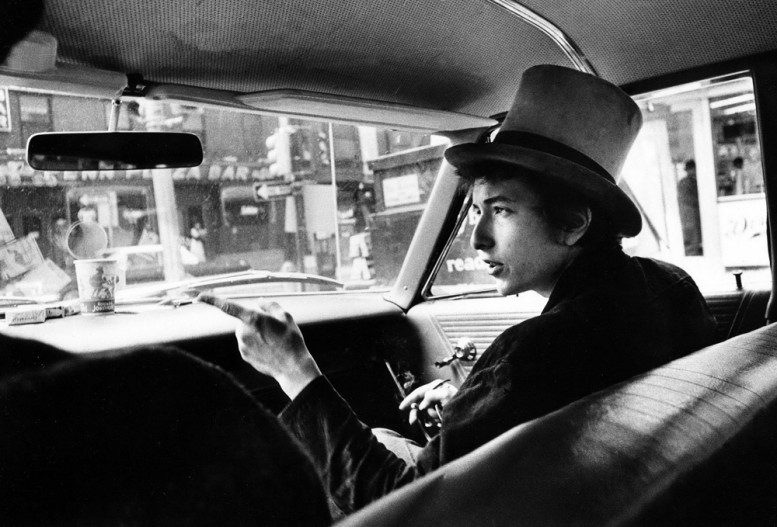 Bob Dylan With Top Hat Pointing In Car, Philadelphia PA 1964 © Daniel Kramer
Bob Dylan With Top Hat Pointing In Car, Philadelphia PA 1964 © Daniel Kramer
An exhibition on view at the Cité de la musique in Paris retraces the important moments of Bob Dylan between the years of 1961 to 1966, during which Dylan radically changed his artistic approach and sparked a musical revolution. Created by the Grammy Museum of Los Angeles, Bob Dylan, Rock Explosion presents, through previously unpublished photos, objects, rare documents and audiovisual archives, the astonishing story of a personal evolution that marked a societal earthquake. On view until July 15 at the Cité de la Musique.
Naked Gun
Photograph by Lena Vazehenina

